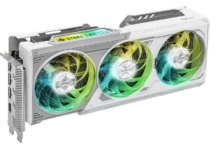SCOTTS VALLEY, Calif. – Seagate (NASDAQ: STX) today introduced the Seagate® Pulsar™ drive, the first product in its new enterprise solid state drive (SSD) family. Designed for enterprise blade and general server applications, the Pulsar drive uses single-level cell (SLC) technology, delivers up to 200GB capacity, and is built in a 2.5-inch small form factor with a SATA interface. The Pulsar drive leverages Seagate’s 30 years of leadership in meeting large enterprise customer needs in product development, qualification, and support.
“Seagate is optimistic about the enterprise SSD opportunity and views the product category as enabling expansion of the overall storage market for both SSDs and HDDs,” said Dave Mosley, Seagate executive vice president, Sales, Marketing, and Product Line Management. “Our strategy is to provide our customers with the exact storage device they need for any application, regardless of the component technology used. We are delivering on that strategy with the Pulsar™ drive, and you can expect additional products in the future from Seagate using a variety of solid state and rotating media components.”
The Pulsar SSD delivers the necessary performance, reliability, and endurance to match the application environments of enterprise blade and general servers. It achieves a peak performance of up to 30,000 read IOPS and 25,000 write IOPS, 240MB/s sequential read and 200 MB/s sequential write. Its SLC-based design optimizes reliability and endurance and helps provide a .44% AFR rating with a 5-year limited warranty. As an additional safeguard, the Pulsar drive leverages Seagate’s enterprise storage expertise to protect against data loss in the event of power failure.
Seagate began shipping Pulsar units to select OEMs for revenue in September 2009. With Seagate’s enterprise knowledge and expertise, OEMs have peace of mind knowing that Seagate has the global enterprise systems, people and processes in place to support their largest requirements.
“To deliver and serve the enterprise SSD marketplace effectively, it is critical for suppliers to understand the needs of their storage system customers with respect to design, manufacturing, supply chain delivery, and support,” said Dave Reinsel, IDC group vice president. “With its well-established OEM and eco-system relationships and a long history of serving global storage OEMs, Seagate is in a unique position to fortify its leading enterprise storage position with its entry into the enterprise solid state storage market.”
As the worldwide market leader in enterprise storage and the first enterprise HDD vendor to deliver an enterprise-class SSD solution, Seagate brings credibility, experience and leadership to this new market segment.
“The enterprise SSD market is now primed and well-positioned for growth from both a revenue and unit perspective, with Gartner estimating unit growth to double and sales to reach $1 billion for calendar year 2010,” said Joseph Unsworth, research director at Gartner. “Superior enterprise SSDs provide transformational capabilities when optimized in storage and server environments.”
The Seagate Pulsar SSD is available to OEM customers for qualification. More information can be found at http://www.seagate.com/www/en-us/products/servers/pulsar/pulsar/
http://twitter.com/Seagate_IT_Ent
seagate.com/twitter
seagate.com/facebook
seagate.com/friendfeed
media.seagate.com
About Seagate
Seagate is the worldwide leader in hard disk drives and storage solutions. Learn more at http://www.seagate.com
Copyright 2009 Seagate Technology LLC. All rights reserved. Printed in USA. Seagate, Seagate Technology, the Wave logo and Pulsar are trademarks or registered trademarks of Seagate Technology LLC or its affiliates in the United States and/or other countries. All other trademarks or registered trademarks are the property of their respective owners. When referring to drive capacity, one gigabyte, or GB, equals one billion bytes. Your computer’s operating system may use a different standard of measurement and report a lower capacity. In addition, some of the listed capacity is used for formatting and other functions, and will not be available for data storage. Seagate reserves the right to change, without notice, product offerings or specifications.

















